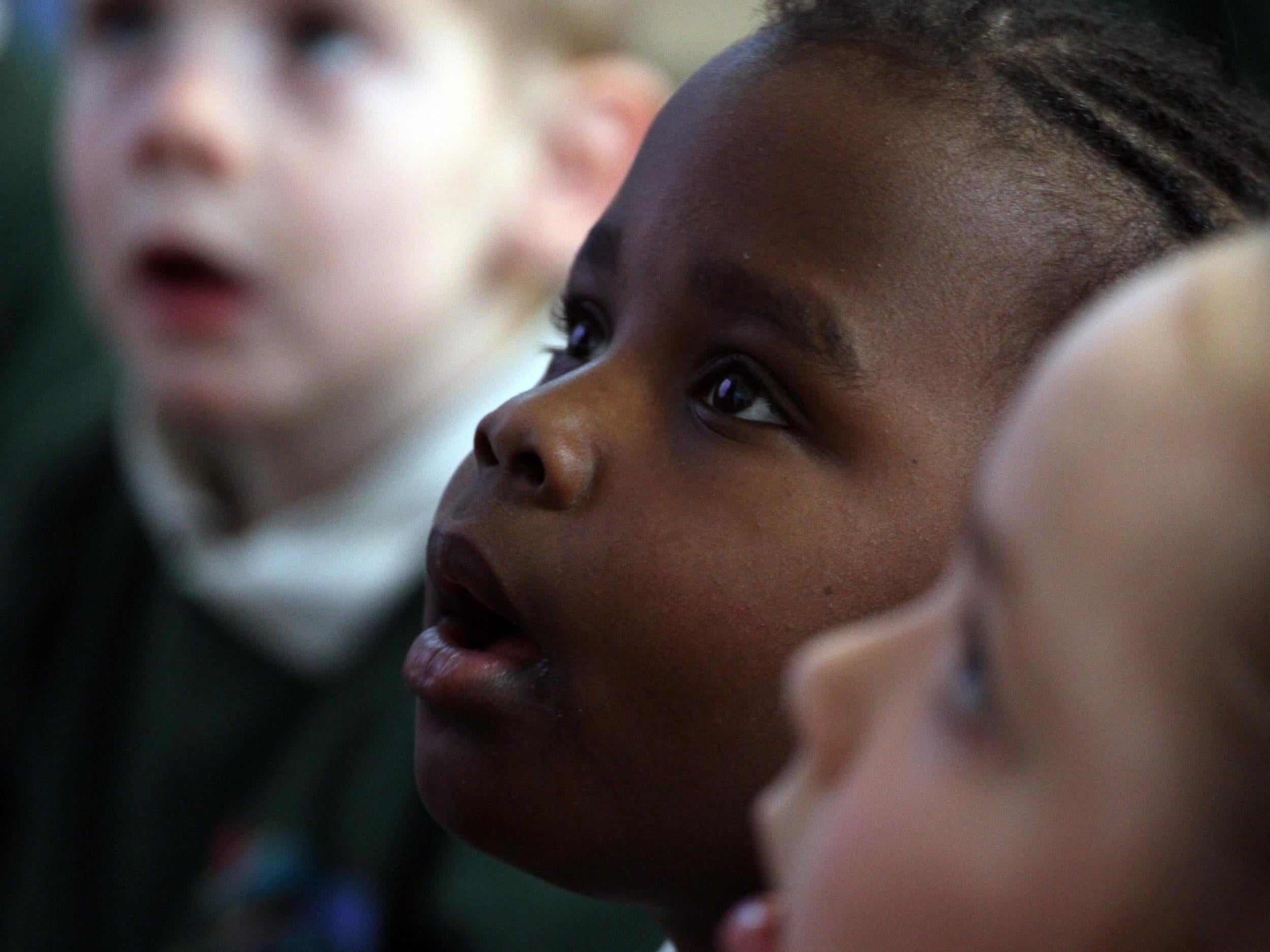The Independent's journalism is supported by our readers. When you purchase through links on our site, we may earn commission.
I wrote a book for my mixed-race daughter so she had a literary heroine to look up to
Just one per cent of children’s books include a BAME main character. More diverse stories can serve as a means of counteracting dangerous narratives that frame inclusion as a threat

The Centre for Literature in Primary Education’s report today on ethnic diversity within children’s literature in 2017 makes for sobering reading. How did we end up where only one per cent of children’s books features a black and minority ethnic (BAME) main character in a country where 32 per cent of children of compulsory school age are of minority ethnic origin? This in no way reflects the diversity of our society, but it does reflect the lack of diversity in children’s publishing.
When I was growing up, I noticed that boys featured much more predominantly as heroes in children’s literature. I remember being very frustrated at George from The Famous Five who was determined to be “just as good as a boy”, but I didn’t think a great deal about race. Attending a small school in the northeast meant that my world was very white. After I met my husband Satish and became part of a wonderful Mauritian family, I began to notice just how little literature does to show diverse societies.
When I became pregnant with our daughter, Ashoka, after four gruelling rounds of IVF, we were very excited. We talked about everything we’d do with her, including making World Book Day costumes. I rattled off all of the brilliant heroines she could dress up as, then Satish asked: “Well, what if she wants to dress up as a brown character?” That really hit home.
What options are we giving Black and Asian children who want to dress up someone who looks like them? What message does it send BAME children when we leave them out of books? That we don’t see them as a part of our society? That they should identify more with white characters?
The call for diversity in children’s literature is not a fad that is going to go away. In a hostile environment where people of colour are increasingly being made to feel unwelcome in the country where they were born, it is more important than ever for us to give children stories that reflect our wonderful multicultural society. These stories can serve as a means of counteracting dangerous narratives being spun by those who see diversity as a threat.
While pregnant, I started work on a book about a British Asian girl and her Mauritian grandma solving a mystery together. There’s a lot of debate on writing from BAME characters’ perspectives as a white author, which may put authors off, but as part of a loving Asian family I wanted to show what that is like. Ashoka will be able to recognise a lot of characters from her own world and family and their everyday lives, and I hope other children will too.
It’s a slow process, but it is wonderful to see children’s publishing looking to change itself from within. Unable to make enough of a mark within big publishing houses, people are starting to set up their own imprints with a specific focus on bringing more diversity to children’s books such as Knights Of, Lantana Books and Tiny Owl Publishing.
When Knights Of asked if I’d write the tie-in novel for the award-winning game Knights And Bikes I had to do it, for Ashoka. It features two vibrant, adventure-loving heroines, the coolest of which is Nessa, an Asian girl with an attitude who I know my daughter will adore. It’s also a comedy adventure, so when I read that out of 9,115 children’s books published in the UK last year, only one featuring a BAME character was a comedy, I was astounded. We shouldn’t be afraid to write about BAME kids being funny, or doing everything that we write about white kids doing.
Nearly 40 of the kids’ books featuring BAME characters that came out last year feature social justice issues, but if we are to build children’s self-esteem it’s important for them to see characters like themselves living their lives and having the same adventures as white characters.
The day my daughter was born I felt a fierce longing to change the world for her. OK, that’s a task that might take a while, but at least I can change the worlds she reads about. I want her to see someone like her going on quests, hunting down lost treasures, solving mysteries, riding dragons, saving the universe and I really want every kid to have a great choice of World Book Day costumes!
‘Knights and Bikes’ by Gabrielle Kent is published on 2 August by Knights Of (price £6.99 paperback). It can be pre-ordered here
Join our commenting forum
Join thought-provoking conversations, follow other Independent readers and see their replies
Comments